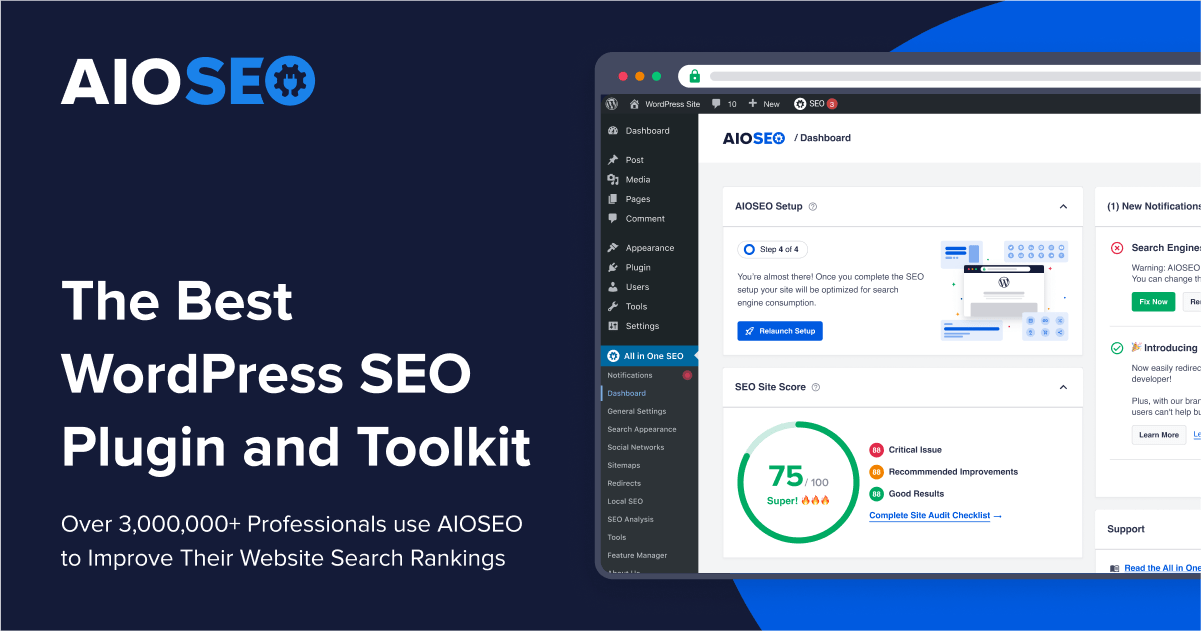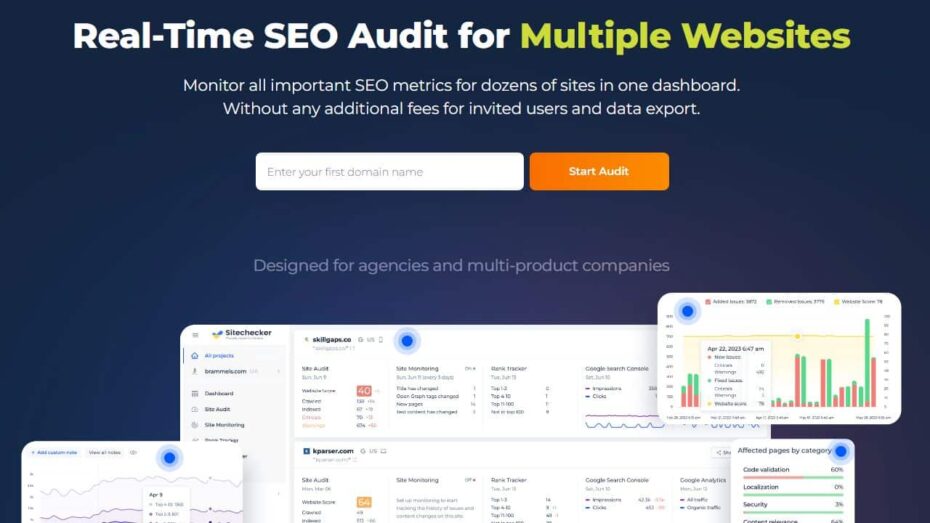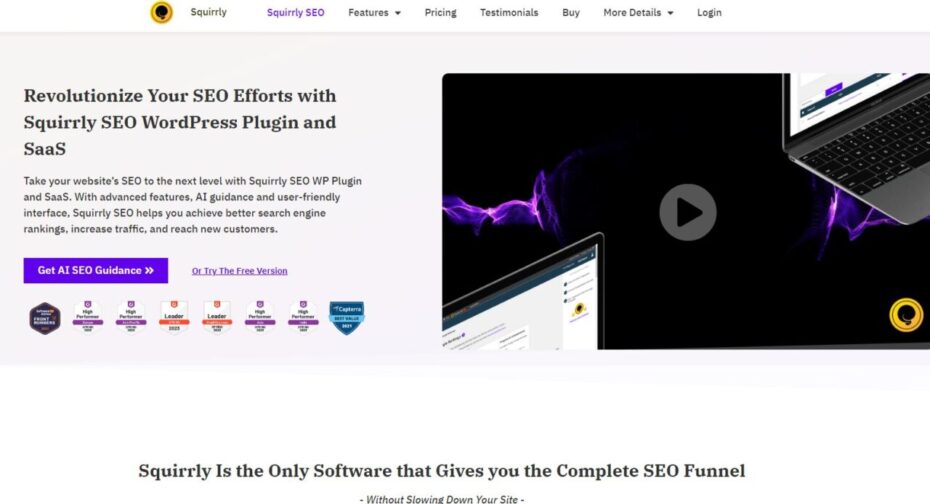How can SEO content marketing transform your business’s online presence? Why is it vital to integrate it into your digital marketing strategy?
SEO content marketing plays a crucial role in enhancing your online visibility and engaging your target audience. By strategically using keywords related to your business, you can significantly improve your website’s search engine rankings, driving more organic traffic to your site.
In this introduction, I’ll walk you through the essentials of SEO content marketing and how it can be leveraged to boost your brand’s digital footprint.
Table of Contents
Boost Your Online Visibility with Effective SEO Content Marketing Strategies
SEO content marketing is not just about integrating keywords; it’s about crafting content that resonates with your audience and aligns with their search intents. As businesses strive to increase their online visibility, understanding and implementing effective SEO strategies becomes paramount. This section explores how you can enhance your digital presence through targeted content strategies.
Firstly, a robust SEO content strategy starts with knowing your audience. From my point of view, the more accurately you can identify the interests, needs, and problems of your target audience, the more tailored and effective your content can be.
This involves analyzing user data and engagement metrics to refine your content continually. It’s not just about attracting traffic; it’s about attracting the right traffic that will engage and convert.
Secondly, I strongly believe that consistency is key in SEO content marketing. Regular updates with valuable content not only keep your audience engaged but also signal to search engines that your website is a relevant and active source of information.
Each piece of content should serve a purpose and add value, whether it’s to inform, educate, or entertain your readers. My recommendation is to maintain a content calendar to help plan and execute your strategy efficiently.
Thirdly, I suggest optimizing all aspects of your content for search engines. This includes not just the text, but also images, videos, and even the user experience. SEO-friendly formatting, such as using headers, bullet points, and short paragraphs, makes content easier for readers to digest and for search engines to crawl. Enhancing on-page elements like meta descriptions and title tags can also boost your visibility in search results.
SEO Services Recommendations
 AIOSEO
|  Sitechecker
|  Squirrly
|
Understanding SEO Content Marketing Basics
To effectively engage in SEO content marketing, one must first grasp its core principles. From my perspective, SEO content marketing revolves around creating content that both appeals to your target audience and adheres to search engine algorithms.
It’s about striking a balance between informative and optimized content. This balance ensures your site ranks well for relevant keywords while also providing genuine value to your readers.
In my opinion, the foundation of SEO content marketing is keyword research. Identifying the right keywords to target is crucial because these are the terms your potential customers are searching for.
However, it’s important to integrate these keywords naturally into your content. Keyword stuffing can harm your SEO efforts, as search engines penalize sites that overuse keywords, deeming them of low quality.
I recommend focusing on long-tail keywords as they are less competitive and more specific. These keywords often reflect closer to actual search queries and can lead to higher conversion rates. By targeting long-tail keywords, businesses can attract traffic that is more likely to convert into leads and sales.
Key Techniques to Elevate Your SEO Content
First and foremost, creating high-quality content is paramount. I cannot stress enough how essential the quality of your content is for SEO success. High-quality content is characterized by accuracy, depth, relevance, and an ability to engage the reader. It should provide solutions or valuable insights that address the readers’ needs.
From my perspective, leveraging varied content formats can significantly enhance SEO. Incorporating videos, infographics, and images not only makes your content more engaging but also benefits SEO by increasing the time users spend on your site. Additionally, these formats can be optimized for search engines through tags and descriptions, broadening your visibility.
My suggestion for improving content visibility further involves strategic link building. Internal linking helps search engines understand and index your site’s structure. External links from reputable sites, on the other hand, boost your site’s authority and ranking. Building these links requires creating content that is not only valuable but also shareable.
Lastly, I believe in the power of content optimization through analytics. Regularly reviewing how your content performs using tools like Hotjar can provide insights into what works and what doesn’t. This data is crucial for refining your strategy and ensuring that your content marketing efforts are effective.
Discover the Secrets to Creating Magnetic Content for SEO
Did you know that the average time a visitor spends on a website can be as little as 15 seconds? This surprising fact highlights the immense challenge and importance of creating truly magnetic content that immediately grabs attention. In this section, we’ll explore how to develop content that not only captures interest but also enhances your SEO effectiveness.
Firstly, the core of magnetic content lies in understanding your audience deeply. My advice is to conduct thorough audience research to uncover the specific needs, preferences, and pain points of your target demographic.
This understanding allows you to tailor your content precisely, making it more relevant and engaging. Remember, content that resonates with the reader is more likely to keep them on your page longer, reducing bounce rates and boosting your SEO rankings.
Secondly, I recommend focusing on the value your content offers. Each piece of content should serve a clear purpose and provide a tangible benefit to the reader. Whether it’s solving a problem, providing unique insights, or simply entertaining, content that delivers real value is content that readers will want to consume and share. This not only helps with SEO but also establishes your brand as a trustworthy authority in your field.
Lastly, I think it’s crucial to keep content fresh and updated. Regular updates not only signal to search engines that your website is active but also give you an opportunity to adjust your SEO strategies based on the latest algorithm updates and trends. I’m of the mind that an agile approach to content creation—one that adapts to changing conditions and feedback—is key to SEO success.
Crafting Captivating Headlines for Maximum Engagement
Surprisingly, 8 out of 10 people will read a headline, but only 2 out of those 10 will read the rest of your content. This statistic underlines the critical importance of crafting headlines that not only draw attention but also promise value. A great headline sets the tone and expectation, enticing readers to explore further.
From my perspective, effective headlines are a blend of clarity, curiosity, and keyword optimization. Clarity ensures that the reader knows what to expect from the article, while curiosity compels them to read on. Incorporating relevant keywords naturally into your headlines also helps improve visibility in search results, drawing in a targeted audience.
I recommend using power words and emotional triggers in your headlines. These can significantly increase the click-through rate by tapping into the reader’s psychological triggers. For example, words like ‘uncover,’ ‘secrets,’ and ‘instant’ can generate excitement and anticipation.
Finally, I suggest A/B testing your headlines. This technique allows you to see which headlines perform better in terms of engagement and SEO results. By continuously testing and refining, you can develop a keen sense for what works best for your audience and search engines alike.
Leveraging Visuals to Enhance SEO Impact
It might come as a surprise, but articles with images get 94% more views than those without. This statistic highlights the significant impact visuals can have on both engagement and SEO. Integrating relevant, high-quality images into your content can break the monotony of text, making your content more appealing and accessible.
I believe that the strategic use of visuals can greatly enhance your SEO efforts. Images, when properly tagged with alt text that includes relevant keywords, can improve your content’s visibility on search engines. This practice not only aids in SEO but also enhances the user experience, particularly for those using screen readers.
My recommendation extends to diversifying the types of visuals used. Incorporating infographics, videos, and charts can cater to different learning styles and preferences, making your content more engaging. Visuals such as infographics can also be highly shareable, which may lead to increased backlinks and further SEO benefits.
Lastly, I am of the view that optimizing image sizes and formats is crucial. Large images can slow down your page load speed, negatively affecting your SEO. I suggest using optimized file formats and compression tools to keep your site running smoothly while still benefiting from the power of visuals.
Analyzing the Role of Keywords in SEO Content Creation
Keywords are the backbone of SEO content marketing. Understanding their role and how they influence the reach and effectiveness of your content is critical. In this section, we’ll explore why keywords are essential and how to utilize them to maximize your SEO efforts.
Firstly, keywords act as the bridge between what people are searching for and the content you provide to meet that need. From my perspective, the use of relevant keywords helps search engines understand the subject matter of your content, which can improve your visibility in search results.
However, it’s important to use keywords naturally and avoid stuffing them into your content. This ensures that your content remains readable and engaging, enhancing user experience while satisfying search engine algorithms.
Secondly, I believe that keyword relevance can dramatically influence your content’s SEO performance. My advice is to not only focus on the most popular keywords but to also consider long-tail keywords.
These are more specific phrases that may have lower search volumes but higher relevance to your target audience. By targeting these, you can attract more qualified traffic to your site—visitors who are more likely to engage with your content and convert into customers.
Lastly, I would say that monitoring the performance of your keywords is crucial. I suggest using SEO tools to track how well your keywords are performing in terms of rankings, conversions, and traffic generation. This ongoing analysis allows you to adapt and refine your strategy, ensuring your content remains competitive and relevant.
Strategic Placement of Keywords for Optimal SEO
Positioning your keywords strategically throughout your content can significantly boost its visibility and engagement. I recommend incorporating your primary keyword in critical places such as the title, headings, introduction, and conclusion. This not only signals to search engines what your content is about but also maintains the flow and relevance of the information.
From my perspective, it’s not just about where, but how you integrate your keywords. I think it’s crucial to balance keyword placement with natural language to avoid disrupting the reader’s experience. Including synonyms and related terms can enhance readability and SEO by broadening the scope of queries your content can rank for.
In my opinion, the strategic use of keywords should extend to your metadata as well. This includes title tags, meta descriptions, and URL slugs. Such elements are pivotal because they provide search engines with concise summaries of your webpage’s content, influencing how your pages are indexed and served to users.
Most importantly, I strongly believe in the power of contextual keyword placement. Ensuring that keywords fit naturally within your content’s context can improve user engagement. My advice is to weave keywords into high-quality, informative content that addresses the interests and needs of your audience, thereby boosting both SEO and reader satisfaction.
Tools and Techniques for Keyword Research Success
Effective keyword research is foundational to successful SEO content marketing. Here’s how you can start: I suggest using tools like Google Keyword Planner, Ahrefs, or SEMrush to uncover popular and niche keywords relevant to your business. These tools provide insights into search volumes, competition levels, and related keywords that can inspire new content ideas.
I believe that understanding searcher intent is crucial. My recommendation is to categorize keywords by intent, such as informational, navigational, or transactional. This helps in crafting content that aligns with what the searcher is looking for, thereby enhancing the relevance and attractiveness of your content.
I would say that keeping an eye on your competition is also beneficial. Analyzing which keywords they are ranking for can provide valuable insights into market trends and effective SEO strategies. This doesn’t mean copying them, but rather understanding the landscape and finding opportunities to differentiate your content.
Lastly, my advice is to continuously refine your keyword strategy. The digital landscape is always evolving, and so are keyword trends and their effectiveness. Regularly updating your keyword list and adjusting your content accordingly is essential for maintaining a competitive edge in search rankings.
Measuring the Success of Your SEO Content Marketing Efforts
To truly understand the impact of your SEO content marketing efforts, it’s critical to measure their success effectively. This section will guide you through the process of evaluating your strategies to ensure they deliver the intended outcomes. By tracking the right metrics, you can gain insights that allow for continuous improvement.
Firstly, the success of SEO content marketing can often be seen in increased website traffic. I would say that monitoring changes in your site’s traffic is a fundamental metric.
Tools like Google Analytics can provide you with data on overall visits, unique visits, and the sources of this traffic, whether it be direct, from search engines, or referred by other websites. This information is crucial as it helps you understand whether your content is attracting more viewers over time.
Secondly, I strongly believe that engagement metrics are just as important as traffic numbers. Engagement metrics, including page views per visit, average session duration, and bounce rates, offer deeper insights into how well your content holds the attention of your audience.
High engagement rates typically indicate that your content is relevant and interesting to your visitors, which is a positive signal to search engines and can improve your SEO performance.
Lastly, conversions are the ultimate indicator of SEO content marketing success. From my perspective, setting up goals in your analytics tool to track how many visitors complete a desired action, like signing up for a newsletter or making a purchase, can directly measure the effectiveness of your content. This data not only reflects the ROI of your content marketing efforts but also helps you refine your strategy to boost future conversions.
Essential Metrics to Track Content Performance
Understanding which metrics to track is crucial for any SEO content marketer. From my point of view, the most important metrics include organic search traffic, keyword rankings, and the number of inbound links. These metrics provide a clear indication of how well your content is performing in search engines and the impact it has on attracting visitors.
I recommend closely monitoring the organic search traffic your content generates. This metric helps you assess the direct impact of your SEO efforts on attracting visitors via search engines. A steady increase in organic traffic generally signifies that your SEO practices are effective and that your content is well-optimized and valuable to your audience.
Keyword rankings are also vital. My suggestion is to regularly check how your content ranks for key terms related to your business. This not only helps you understand your content’s visibility on search engines but also informs you if you need to adjust your SEO tactics to improve rankings.
Additionally, tracking inbound links to your content is essential. I believe that the more high-quality sites link to your content, the more authoritative and trustworthy search engines consider your site to be. This, in turn, can significantly enhance your SEO rankings.
Using Analytics to Refine Your SEO Strategies
Analytics play a key role in refining your SEO strategies. Here’s how you can start: I suggest using tools like Google Analytics and SEMrush to gather data on how your content performs. This data should include user behavior, traffic sources, and engagement metrics, which can provide invaluable insights into what works and what doesn’t.
From my experience, segmenting data can reveal powerful insights. By breaking down data by demographic, source, or behavior, you can tailor your SEO strategies to better meet the needs of specific audience segments. This targeted approach often results in higher engagement and conversion rates.
I would say that it’s crucial to conduct regular SEO audits based on analytics. My recommendation is to periodically review your SEO performance to identify areas for improvement. This might include updating old content, optimizing metadata, or adjusting your keyword strategy based on current trends.
Lastly, I think integrating feedback loops into your strategy is vital. Using analytics to test different content formats or SEO techniques and then applying lessons learned can create a cycle of continuous improvement. This adaptive approach ensures your SEO strategies remain effective even as market conditions change.
Innovative Approaches to SEO Content That Ranks
In the rapidly evolving world of SEO, staying ahead means adopting innovative strategies that resonate with both search engines and users. This section delves into fresh approaches to creating SEO content that not only ranks well but also engages and converts readers.
First, I think it’s crucial to embrace the holistic content experience. Integrating interactive elements such as quizzes, polls, and interactive infographics can significantly boost user engagement.
These features encourage users to spend more time on your pages, which search engines interpret as a positive signal. Additionally, providing a variety of content formats caters to different user preferences, enhancing the overall accessibility of your information.
Secondly, I would say that topical authority is becoming increasingly important. Building content that covers a topic comprehensively can establish your site as an authoritative source in your niche.
This involves creating a cluster of related content that covers not only the main keywords but also the surrounding subtopics. Such a strategy not only improves your SEO but also provides immense value to your audience, ensuring they see you as a go-to resource.
Lastly, my recommendation is to leverage user-generated content wherever possible. Reviews, comments, and community discussions can enrich your content and boost its relevance and freshness. This not only helps with SEO but also builds a community around your brand, fostering loyalty and increasing content engagement.
Trends and Predictions for the Future of SEO Content
Looking ahead, voice search optimization is something you can’t ignore. As more people use digital assistants, optimizing for voice search will become increasingly crucial. This means focusing on long-tail keywords and questions that people are likely to speak rather than type. Structuring content to answer these questions directly can enhance your visibility in voice search results.
Moreover, I strongly believe that video content will dominate SEO strategies. Videos are highly engaging and can convey complex information in an easily digestible format. Optimizing video content for search, by carefully crafting titles, descriptions, and tags, and providing transcripts, can greatly improve your search rankings and meet the preferences of a broader audience.
Additionally, the importance of mobile-first content continues to grow. With the majority of searches now performed on mobile devices, creating content that is optimized for mobile consumption is paramount. This means ensuring fast load times, responsive design, and content that is easily consumable on smaller screens.
Finally, sustainability and ethics in content creation will gain traction. I believe that as consumers become more environmentally and ethically conscious, they will favor brands that reflect these values in their content. Addressing these concerns in your SEO strategy can not only enhance brand image but also align with broader consumer trends.
How AI and Automation are Shaping SEO Content Creation
Artificial intelligence is revolutionizing the way we create and optimize SEO content. AI tools can analyze data at scale to identify trends and insights that would be impossible for humans to detect alone.
This allows for more targeted and effective content strategies. AI can also automate repetitive tasks such as keyword research and meta tag generation, freeing up creators to focus on crafting compelling content.
In my opinion, the use of AI for personalized content creation is a game changer. AI systems can tailor content to individual user preferences and browsing behaviors, making each interaction more relevant and engaging. This personalization not only improves user experience but also boosts SEO by increasing the time spent on the site and reducing bounce rates.
Moreover, automation in content distribution ensures consistency across platforms. Utilizing tools that automatically post content to various channels can help maintain a steady online presence and ensure that your content reaches its audience no matter where they are.
Lastly, I assume that as AI technology advances, it will become even more integral to SEO content creation. From generating content ideas based on trending topics to predicting the best times to publish posts for optimal engagement, AI and automation are set to deepen their impact on how content is strategized, produced, and shared.
Frequently Asked Questions (FAQ)
What is SEO content marketing?
SEO content marketing is the practice of creating content that is optimized for search engines with the goal of improving your website’s visibility and attracting organic traffic. It involves strategic use of keywords, high-quality content creation, and engaging formats to meet both user needs and search engine algorithms.
How does SEO content marketing benefit my business?
It increases online visibility, drives targeted traffic, enhances user engagement, and can lead to higher conversion rates. By consistently providing valuable and relevant content, you build authority in your niche, which can improve your search engine rankings and overall brand credibility.
What are the key components of an effective SEO content marketing strategy?
Key components include thorough keyword research, high-quality content creation, strategic keyword placement, use of varied content formats (like videos and infographics), and regular performance tracking using analytics tools. Consistency and relevance are crucial for maintaining and improving search engine rankings.
How do I conduct keyword research for SEO content marketing?
Use tools like Google Keyword Planner, SEOPowersuite, and SEMrush to identify relevant keywords with good search volume and low competition. Focus on both primary and long-tail keywords that align with your audience’s search intents. Analyzing competitor keywords can also provide valuable insights.
What is the importance of long-tail keywords in SEO content marketing?
Long-tail keywords are specific phrases with lower search volumes but higher intent. They are less competitive and often lead to higher conversion rates because they match more precise search queries. Targeting long-tail keywords helps attract a more qualified audience that is more likely to engage and convert.
How can I optimize my content for SEO without keyword stuffing?
Integrate keywords naturally within the content, ensuring readability and relevance. Use synonyms and related terms to avoid overuse. Focus on creating valuable content that answers the users’ questions. Optimize other elements like meta descriptions, headings, and image alt texts with keywords.
What role do visuals play in SEO content marketing?
Visuals like images, videos, and infographics make content more engaging and digestible. They can increase the time users spend on your site, reducing bounce rates. Properly tagged visuals with relevant keywords can also improve search engine visibility. Ensure images are optimized for fast loading to maintain site performance.
How do I measure the success of my SEO content marketing efforts?
Track metrics such as organic search traffic, keyword rankings, engagement rates (like bounce rate and average session duration), and conversions. Use tools like Hotjar to monitor these metrics. Regularly review and refine your strategy based on performance data to ensure continuous improvement.
What are some common mistakes to avoid in SEO content marketing?
Avoid keyword stuffing, creating low-quality or irrelevant content, ignoring mobile optimization, and neglecting analytics. Ensure that all content adds value and is optimized for both search engines and user experience. Regular updates and staying informed about SEO best practices are crucial.
How can I stay updated with SEO trends and best practices?
Follow reputable SEO blogs and forums, attend industry conferences, and participate in webinars. Use tools like Moz, Ahrefs, and SEMrush for the latest insights and trends. Continuously experiment with new strategies and analyze the results to adapt your approach as search engine algorithms evolve.






